Key Sectors of the Blue Economy
The Blue Economy spans a wide array of sectors that rely on ocean and coastal ecosystems but are now being reimagined through a lens of environmental sustainability, innovation, and social inclusion. These sectors are not only crucial for global economic growth—they are also essential to addressing the climate crisis, protecting biodiversity, and enhancing community resilience.
Let’s explore the most prominent sectors of the Blue Economy, their sustainable potential, and the innovations driving them forward.
Fisheries and Aquaculture
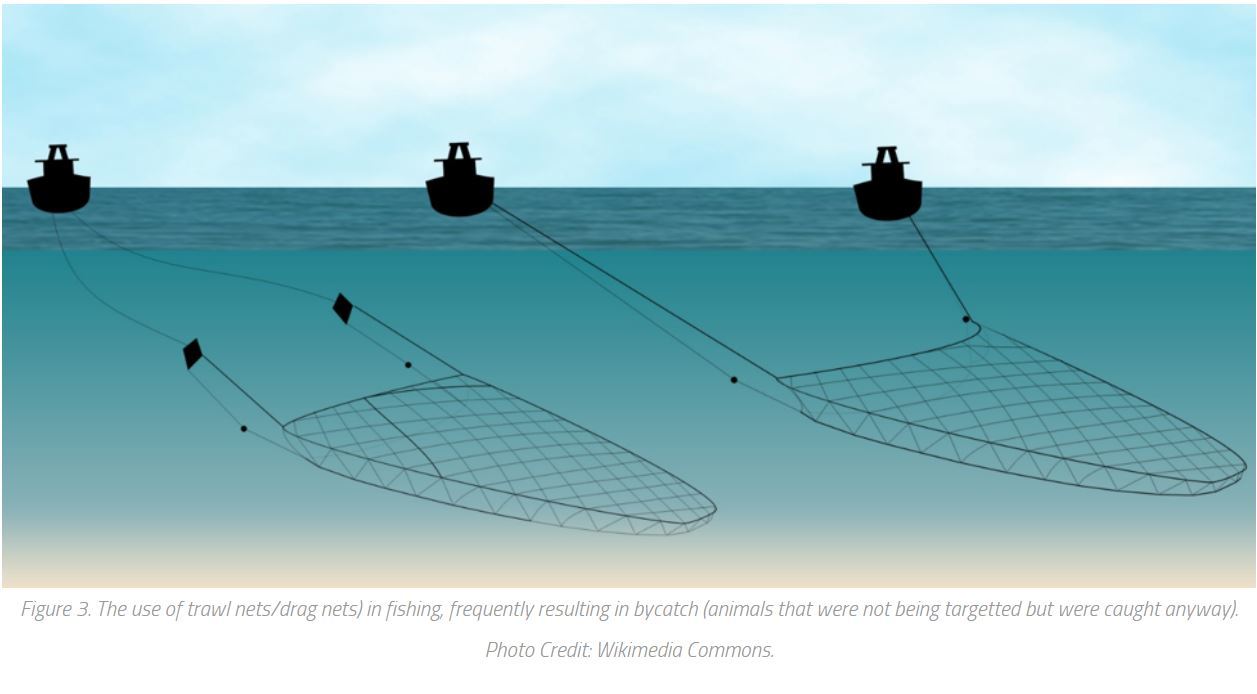
Sustainable fisheries and aquaculture are at the heart of the Blue Economy. Over 3 billion people rely on fish as a major source of protein, yet overfishing and destructive fishing practices have pushed 34% of global fish stocks beyond sustainable limits (FAO, 2022).
Sustainable fisheries focus on science-based quotas, gear modifications to reduce bycatch, and the protection of nursery habitats. Meanwhile, aquaculture—the farming of fish, shellfish, and aquatic plants—is being revolutionized through closed-loop, land-based systems and offshore cages designed to reduce ecological impact.
Examples:
-
Norway is leading in closed-containment salmon farming.
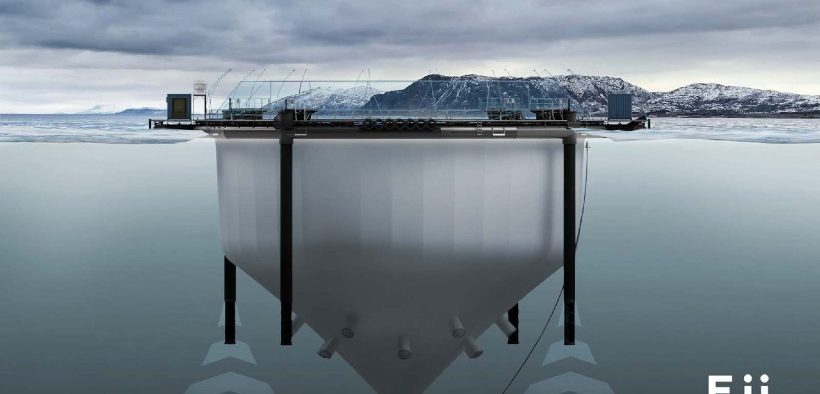
Semi-Closed Salmon Containment Project. Source: fishfocus.co.uk
Norway is pioneering sustainable aquaculture through the use of closed-containment systems for salmon farming. These systems isolate farmed fish from the surrounding marine environment, drastically reducing the risk of parasite transmission, waste pollution, and genetic contamination of wild populations. Major Norwegian companies like Salmon Evolution and Andfjord Salmon are investing in land-based and semi-offshore facilities that recycle water, capture nutrients for reuse in agriculture, and optimize fish welfare through data-driven monitoring.
Impact: Lower disease risk, improved fish quality, and reduced reliance on antibiotics and chemical treatments
-
Zanzibar’s seaweed cooperatives offer income to local women while regenerating shallow ecosystems.
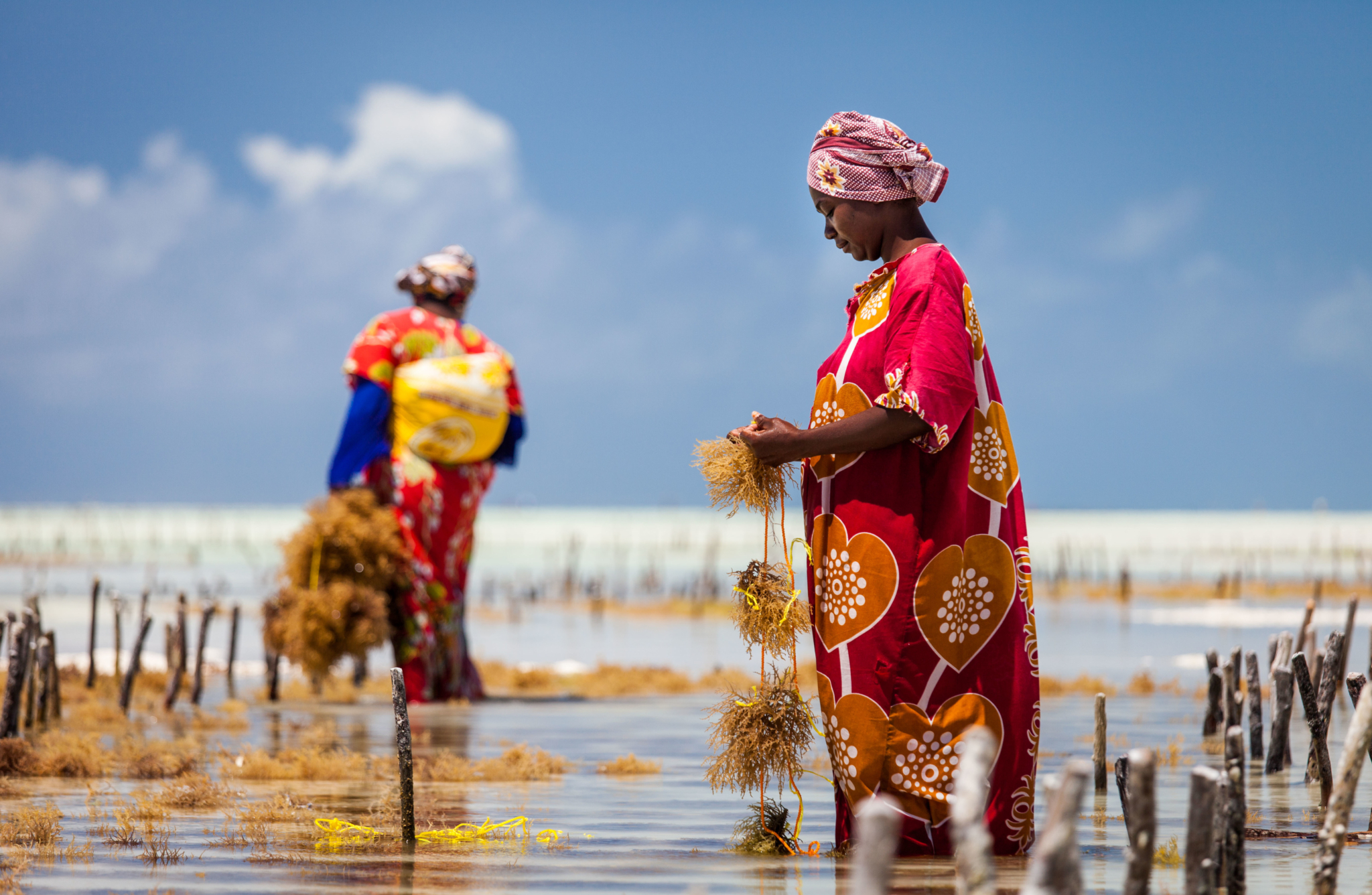
Source: borgenproject.org
In Zanzibar, women-run seaweed farming cooperatives have become a model of inclusive blue economy development. By cultivating Eucheuma and Kappaphycus seaweeds, used in cosmetics and food additives (like carrageenan), women are generating stable incomes. The shallow cultivation areas, often adjacent to coral reefs, support local biodiversity and stabilize sediment, improving ecosystem health. NGOs and researchers have provided training on climate-resilient species and eco-friendly farming methods.
Impact: Women's empowerment, ecosystem regeneration, and sustainable livelihood diversification.
Key goal: Provide healthy protein sources while restoring marine ecosystems and supporting small-scale coastal livelihoods.
Marine Renewable Energy
The oceans offer vast untapped potential for clean energy through offshore wind, tidal, and wave technologies. According to the International Energy Agency (IEA), offshore wind alone could generate over 18 times the world’s current electricity demand if fully harnessed.
-
Offshore wind farms are now being deployed at scale in the North Sea and the Baltic.
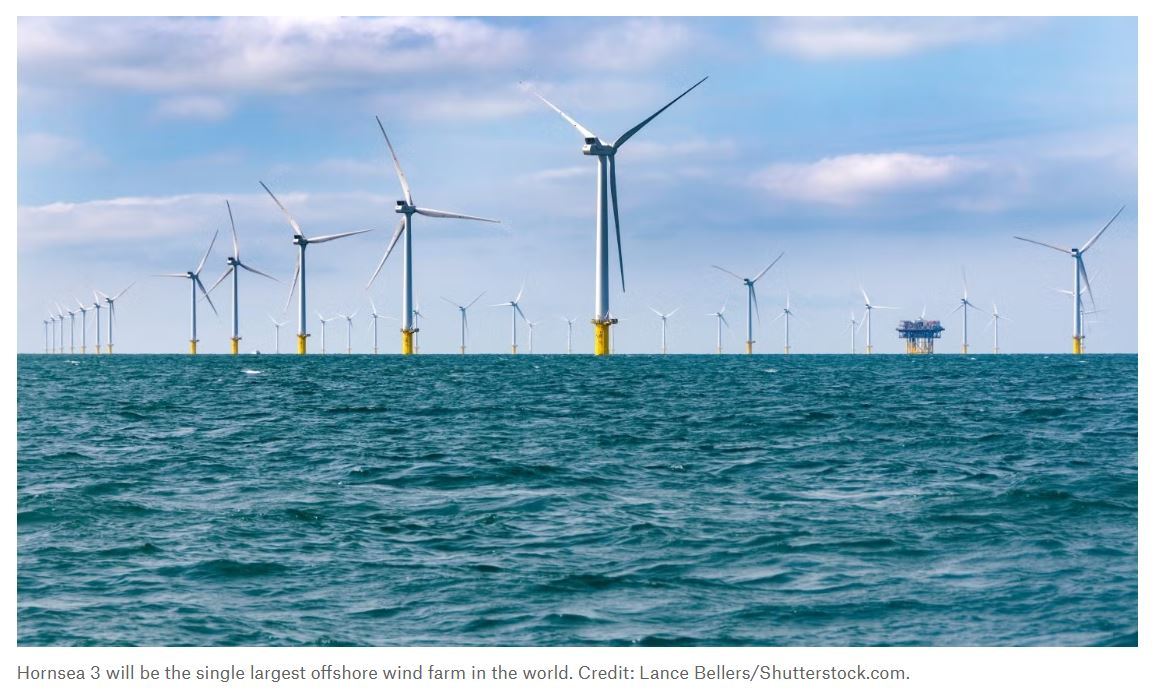
The North Sea and Baltic Sea have become epicentres for offshore wind energy development. Countries like Denmark, the UK, Germany, and the Netherlands are rapidly scaling up offshore wind farms, including floating platforms in deeper waters. Denmark’s Hornsea Project, once fully completed, will be the world’s largest offshore wind farm, supplying electricity to over 4.5 million homes. These projects are integrated with marine spatial planning to minimize ecological disruption.
Impact: Large-scale clean energy generation, job creation in green tech, and fossil fuel reduction.
-
Tidal and wave energy pilot projects are underway in Scotland, Canada, and Portugal, offering predictable, local sources of power.
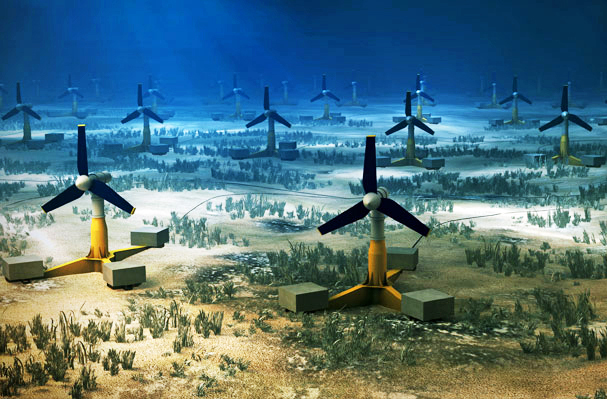
398 MW MeyGen: The World’s Largest Tidal Energy Project in Scotland (Source: inhabitat.com)
Scotland’s MeyGen project is the world’s largest tidal stream energy installation, with underwater turbines in the Pentland Firth. In Nova Scotia, Canada, the Fundy Ocean Research Center for Energy (FORCE) is testing tidal devices in some of the world’s highest tides. Portugal’s WaveRoller project, near Peniche, harnesses oscillating currents to produce electricity. These emerging technologies offer predictable energy output, unlike solar or wind, making them valuable for energy stability.
Impact: Innovation in renewable baseload energy and advancement of low-carbon coastal economies.
These energy forms have zero fuel costs and significantly lower lifecycle emissions than fossil fuels. Floating wind platforms and sub-sea turbines are also opening up deeper waters for clean power development.
Key goal: Decarbonize global energy systems while creating resilient energy grids and new marine-based job markets.
Coastal and Maritime Tourism
Tourism represents about 10% of global GDP and is especially important for Small Island Developing States (SIDS) and coastal regions. The Blue Economy promotes a shift from mass tourism to eco-tourism and regenerative tourism—models that protect natural beauty, respect cultural heritage, and provide fair employment.
Examples:
-
The Maldives’ coral reef tourism levy funds reef restoration.
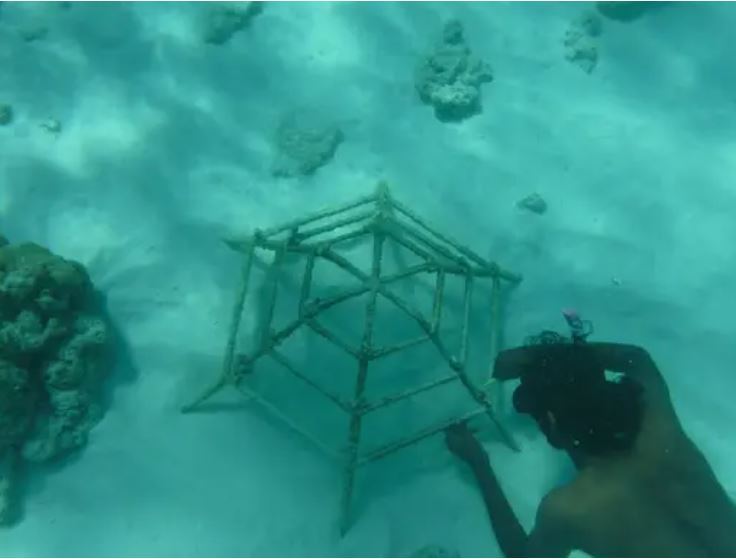
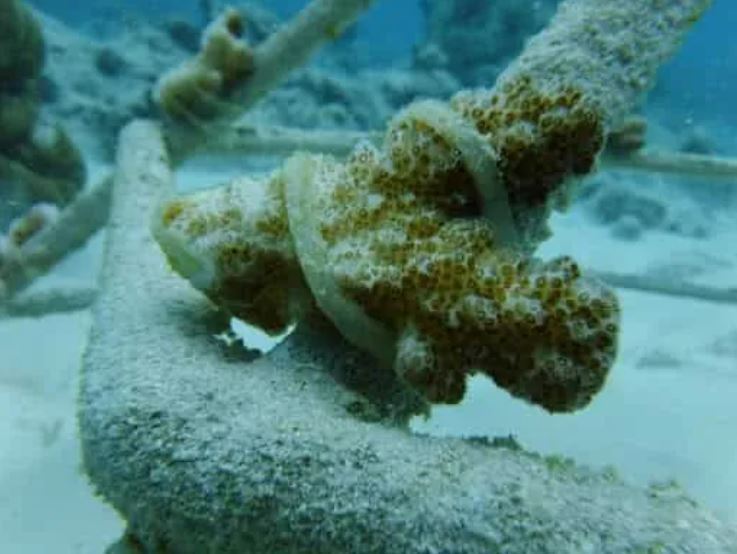
Coral Restoration in the Maldives (Source: ecotourism-world.com)
The Maldives has introduced a coral reef levy on tourism—often considered a form of Payment for Ecosystem Services (PES). A portion of the income from luxury resorts is allocated to reef protection, research, and restoration initiatives. This includes coral gardening, reef monitoring, and community education programs. Resorts like Soneva Fushi actively involve guests in reef planting and biodiversity tours.
Impact: Revenue channelled into ecosystem health while raising environmental awareness among tourists
-
Italy’s Cinque Terre National Park regulates tourist access to prevent environmental degradation.
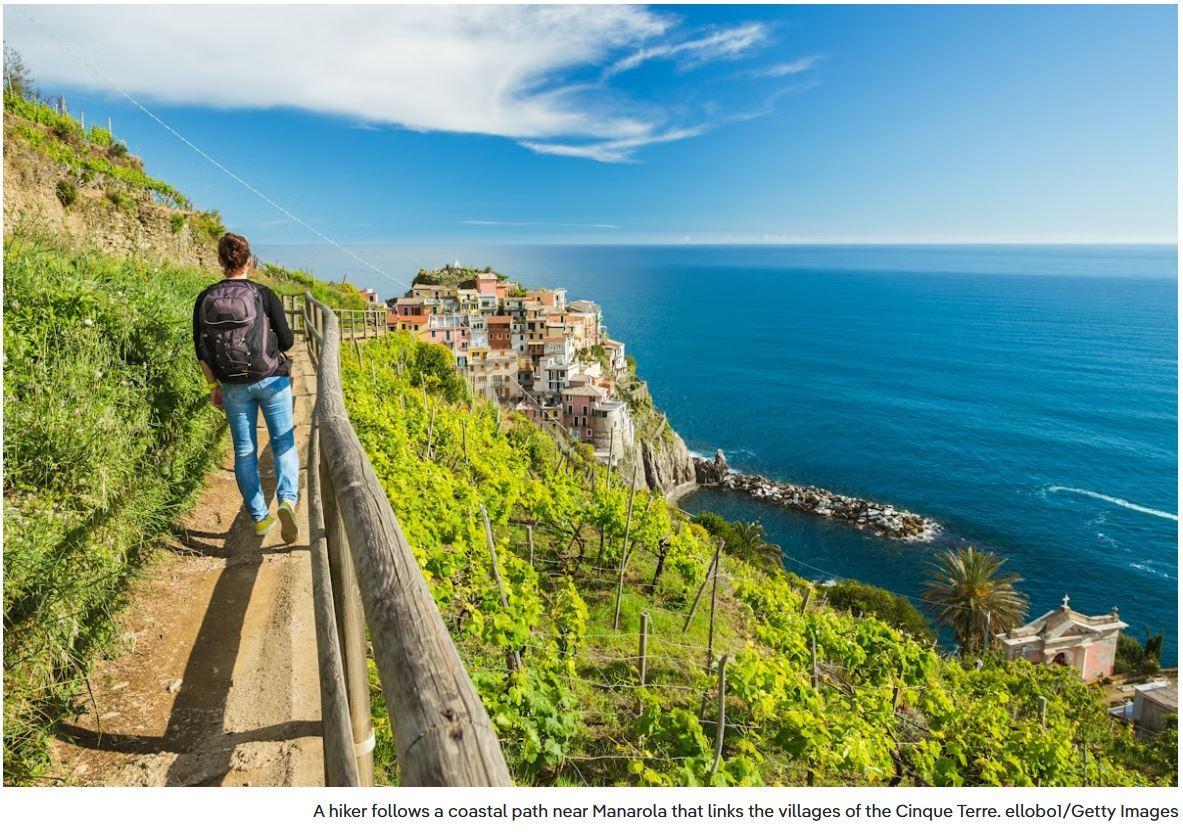
In Cinque Terre National Park, Italy balances heritage conservation with sustainable tourism through visitor quotas, hiking permits, and digital monitoring systems. The steep, terraced coastal landscape is sensitive to erosion, and over- tourism has historically caused trail degradation and waste issues. Restoration programs involve locals in maintaining the traditional dry-stone walls, promoting cultural continuity.
Impact: Controlled tourism flow, preservation of cultural landscapes, and community involvement in stewardship.
Landscape architects and planners are increasingly involved in designing resilient coastal spaces that enhance visitor experience while preserving ecosystems.
Key goal: Ensure that tourism revenues support conservation and community development, not ecosystem collapse.
Maritime Transport
Shipping carries over 90% of global trade but also emits nearly 3% of global greenhouse gases—more than all of Germany. Greening this sector is critical.
Innovations include:
-
Low-carbon fuels like green hydrogen, methanol, and ammonia.
-
Wind-assisted propulsion, hybrid engines, and energy-efficient hull designs.
-
Slow steaming, which reduces emissions by sailing at reduced speeds.
International efforts, such as the IMO’s 2050 decarbonization strategy, are pushing toward net-zero emissions. Ports, too, are embracing sustainability with shore power, electrified cargo handling, and integrated logistics.
Key goal: Decarbonize maritime transport while enhancing supply chain efficiency and reducing oceanic pollution.
Marine Biotechnology
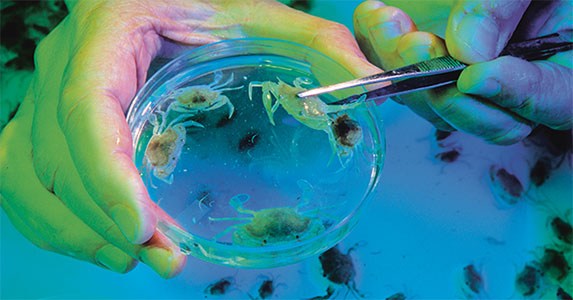
Marine biotechnology applied to cosmetics and healthcare products development. Source: imbrsea.eu)
The ocean is a treasure trove of genetic material, offering new possibilities for medicine, agriculture, cosmetics, and materials science.
Innovations:
-
Marine-derived antibiotics and anticancer compounds from sponges, algae, and deep-sea bacteria.
Sponges, algae, and deep-sea microbes are yielding compounds with antiviral, antibacterial, and anticancer properties. For instance:
- The marine sponge Discodermia produces discodermolide, a compound with anticancer potential.
- Cyanobacteria from ocean environments are being researched for HIV and antibiotic resistance therapies.
Pharmaceutical giants are investing in marine bioprospecting partnerships with research institutes, emphasizing ethical sourcing and biodiversity conservation.
Impact: Cutting-edge medical treatments with ocean origins, reinforcing the value of marine conservation.
-
Bioplastics made from algae that degrade safely in marine environments.
Algae-derived bioplastics are emerging as an alternative to petroleum-based plastics. Companies like Algix (USA) and Bio- on (Italy) use microalgae and seaweed to create biodegradable packaging, textiles, and 3D printing materials. These materials break down naturally in marine environments, avoiding microplastic pollution.
Impact: Reduced plastic waste, closed-loop material cycles, and marine-safe innovation
-
Enzymes from extremophile organisms used in industrial processes and bioremediation.
Marine extremophiles—organisms that live in high pressure, high salinity, or low temperature—produce enzymes that function under extreme conditions. These biocatalysts are used in:
- Detergents (cold-water enzymes)
- Bioremediation (pollutant breakdown in oil spills)
- Bio-industrial processes (e.g. food processing, waste digestion)
Research centers like EMBL (European Molecular Biology Lab) collaborate with blue biotech firms to sustainably source and scale production.
Impact: Greener industrial processes and marine-inspired innovation across sectors
This sector holds vast economic potential, but it also raises ethical questions about bioprospecting, access, and benefit-sharing—areas where inclusive governance is crucial.
Key goal: Unlock oceanic bio-innovation while respecting biodiversity and ensuring equitable access to benefits.
Carbon Sequestration and Blue Carbon Ecosystems
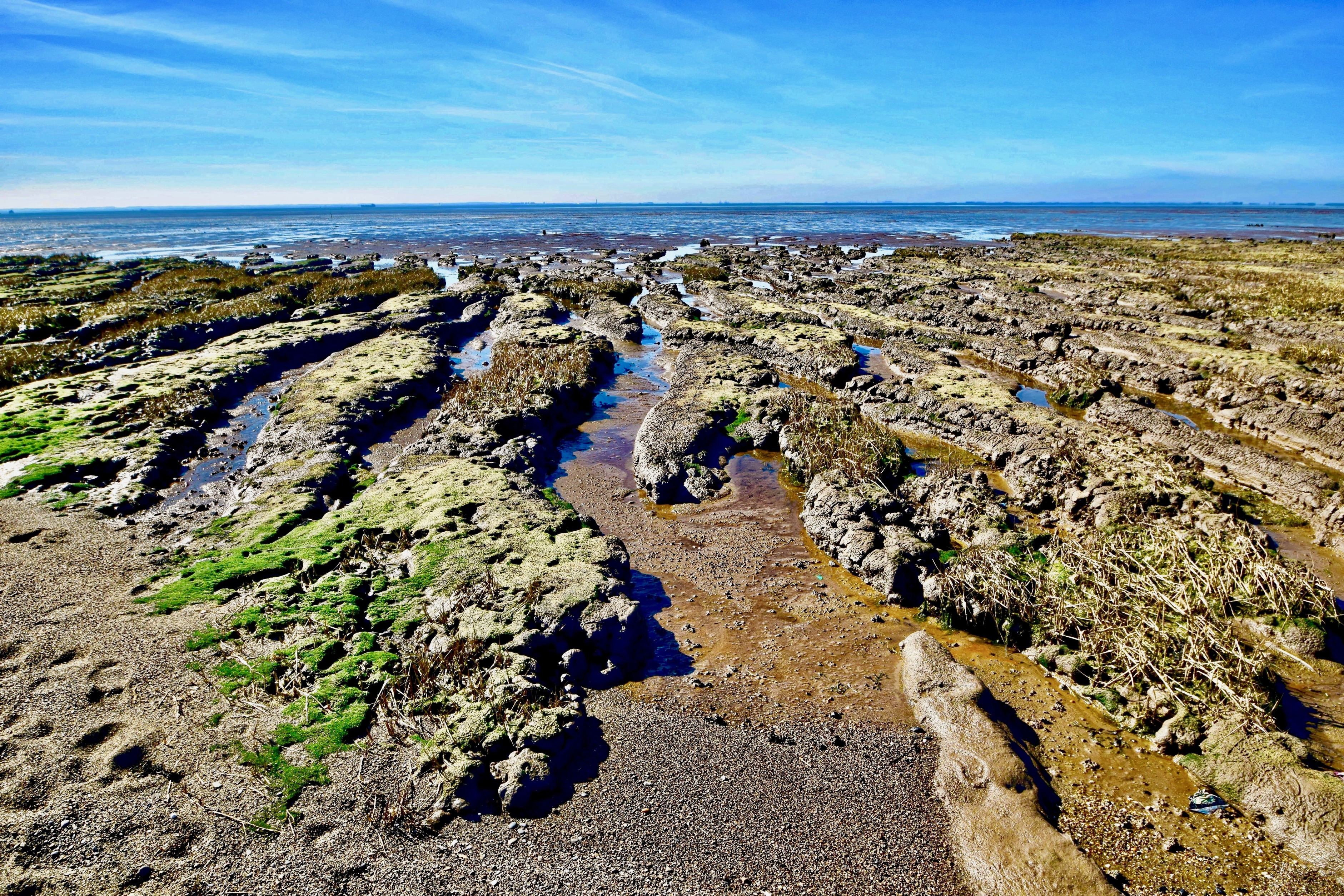
Salt Marsh at Spurn Point (Source: internetgeography.net)
Oceans play a pivotal role in the global carbon cycle, absorbing over 25% of anthropogenic CO₂ emissions. Yet not all marine carbon sinks are created equal.
Blue carbon ecosystems—such as mangroves, seagrasses, and salt marshes—sequester carbon up to 10 times faster per hectare than terrestrial forests and store it safely in sediment for millennia. They also provide:
-
Coastal protection from storms and erosion.
-
Nursery grounds for fish and invertebrates.
-
Water purification and biodiversity refuges.
Conservation and restoration of these habitats are among the most cost-effective climate solutions, according to the Global Mangrove Alliance.
Examples:
-
Indonesia’s national mangrove restoration program aims to replant over 600,000 hectares by 2024.
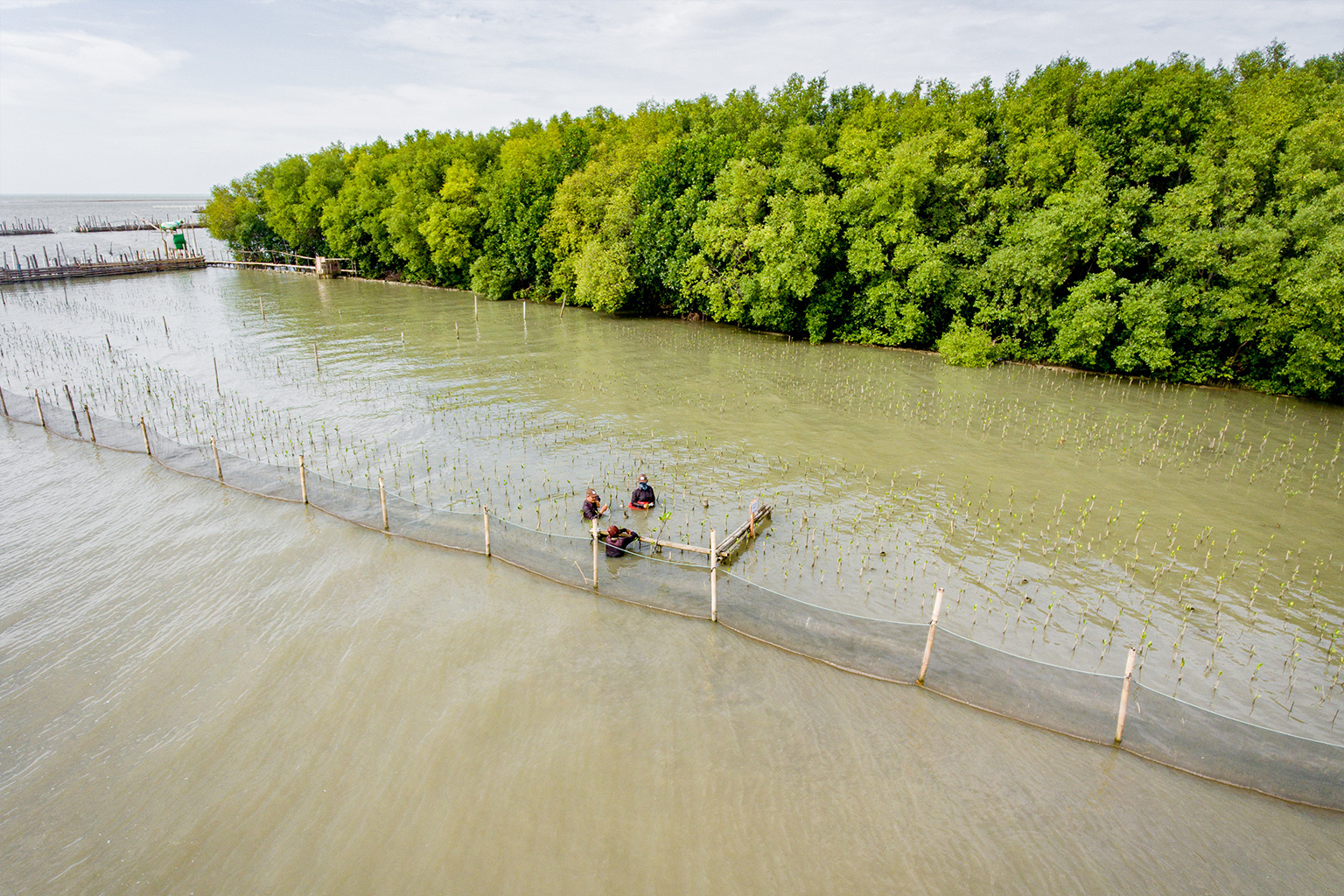
Mangrove planting in Central Java. The study shows only 193,367 hectares of mangrove forest, or 30 percent of the target area, are suitable for restoration programs. (Source: mongabay.co.id)
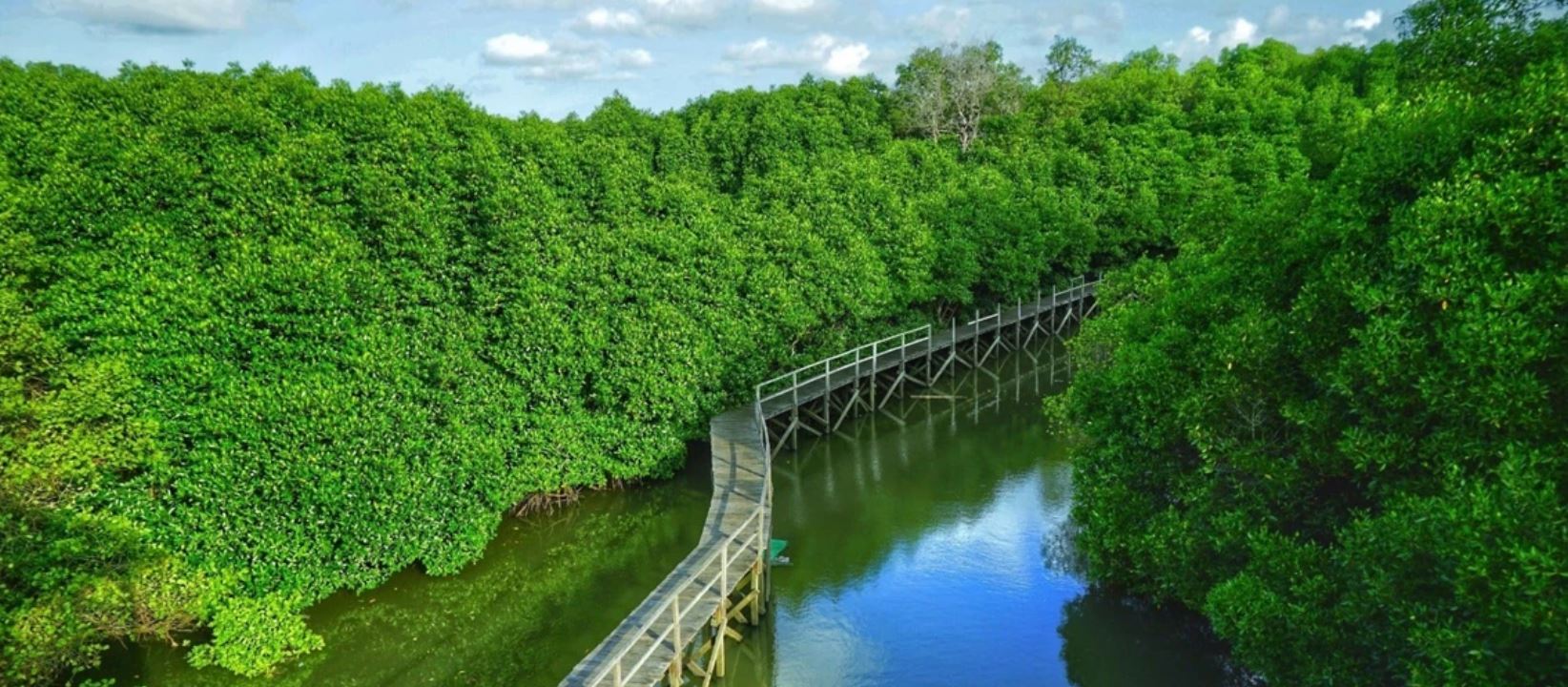
Mangrove Forest in Bali (Source: blogs.worldbank.org)
Indonesia is home to 23% of the world’s mangrove forests but has lost over half due to aquaculture and coastal development. The government has launched an ambitious National Mangrove Rehabilitation Program, aiming to restore over 600,000 hectares by 2024, particularly in degraded areas of Java and Kalimantan.
Efforts include:
-
Community-based planting programs
-
Coastal buffer zones for storm protection
-
Integration with carbon credit markets
Impact: Carbon sequestration, flood protection, habitat recovery, and sustainable livelihoods.
-
Kenya’s Mikoko Pamoja is the world’s first blue carbon credit project run by a community.
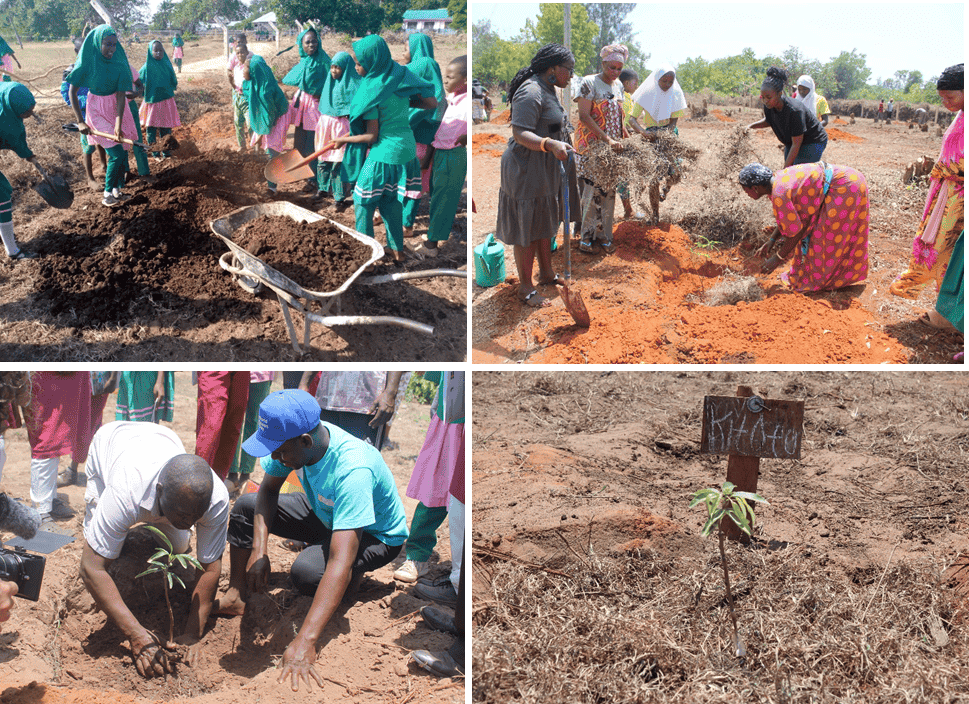
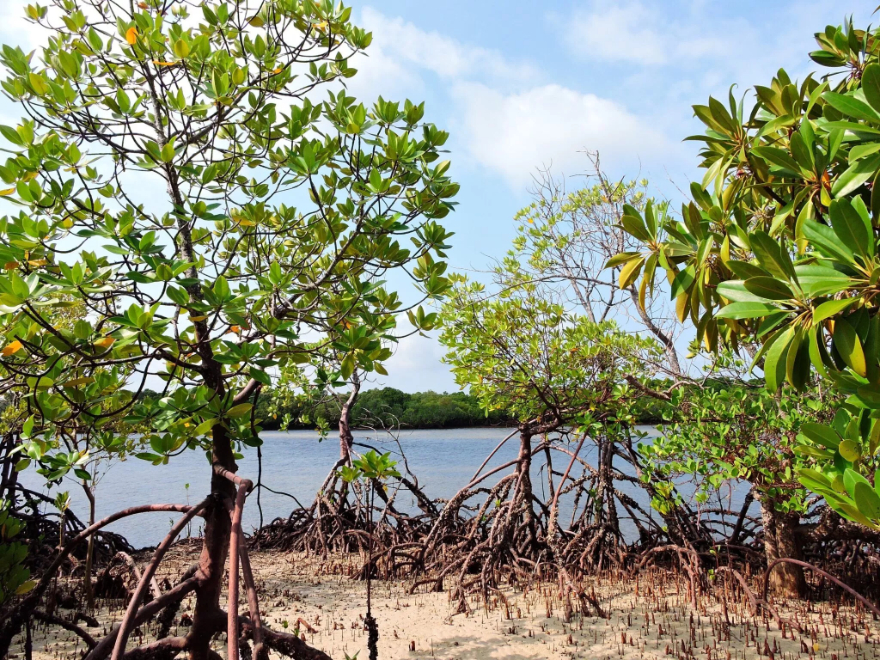
Mangrove Restoration & Conservation (Source: mikokopamoja.org)
Mikoko Pamoja, located near Gazi Bay, Kenya, is the world’s first community-run blue carbon project. It protects and restores mangrove forests while selling verified carbon credits to international buyers. The revenues fund:
- Local schools and clinics
- Water infrastructure
- Conservation education
This model demonstrates how coastal communities can lead climate action while building resilience and equity.
Impact: Climate mitigation, community empowerment, and conservation success.
Key goal: Protect and expand natural carbon sinks that offer co-benefits for biodiversity, livelihoods, and resilience.
References:
-
FAO. (2022). The State of World Fisheries and Aquaculture.
-
IEA. (2020). Offshore Wind Outlook.
-
European Commission. (2021). Sustainable Blue Economy.
-
Global Mangrove Alliance. (2023). The State of the World’s Mangroves.
-
IMO. (2023). Greenhouse Gas Strategy.
Featured Posts
Blog Topics
Urban environment & Public spaces
Stay updated with the latest articles and insights from The Landscape Lab. Here, you will find valuable information and engaging content.
Waterfront & Coastal Resilience
Stay updated with the latest articles and insights from The Landscape Lab. Here, you will find valuable information and engaging content.
Captivating Photography
Stay updated with the latest articles and insights from The Landscape Lab. Here, you will find valuable information and engaging content.
Why Read The Landscape Lab Blog?
The way we design and interact with landscapes is more important than ever. As cities expand, coastlines shift, and climate change reshapes our world, the choices we make about land, water, and urban spaces have lasting impacts. The Landscape Lab Blog is here to spark fresh conversations, challenge conventional thinking, and inspire new approaches to sustainable and resilient design.
If you’re a landscape architect, urban planner, environmentalist, or simply someone who cares about how our surroundings shape our lives, this blog offers insights that matter. We explore the intersections between nature and the built environment, diving into real-world examples of cities adapting to rising sea levels, innovative waterfront designs, and the revival of native ecosystems. We look at how landscapes can work with nature rather than against it, ensuring long-term sustainability and biodiversity.
By reading The Landscape Lab, you'll gain a deeper understanding of the evolving field of landscape design—from rewilding initiatives to regenerative urban planning. Whether it’s uncovering the forgotten history of resilient landscapes, analyzing groundbreaking projects, or discussing the future of green infrastructure, this blog provides a space for learning, inspiration, and meaningful dialogue.
Location:
The Landscape Lab
123 Greenway Drive
Garden City
NY 12345
United Kingdom
Contact Number:
Get in Touch:
contact@thelandscapelab.co.uk
© 2025 thelandscapelab.co.uk - Your go-to blog for landscaping insights
